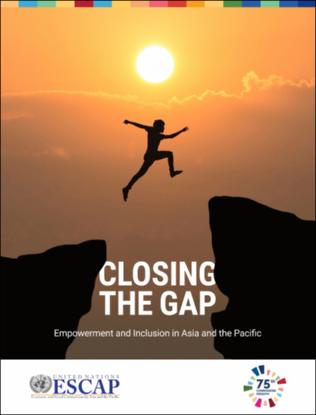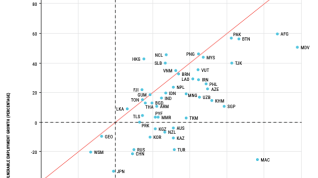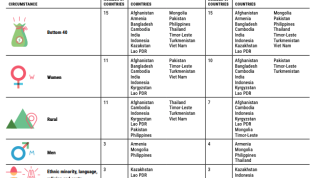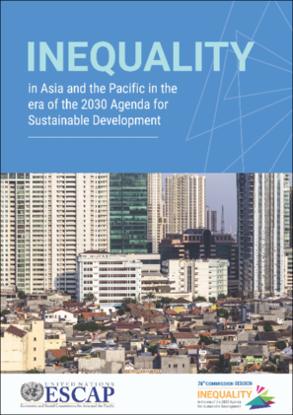Closing the gap : empowerment and inclusion in Asia and the Pacific
Flagship
01 January 2019
• Chapter 1: Methodology and concepts of inclusion and empowerment
• Chapter 2: Are education gaps closing for disadvantaged groups?
• Chapter 3: Are gaps in full-time employment closing for disadvantaged groups?
• Chapter 4: Are incomes among the poorest 40 per cent and rural residents increasing enough?
• Chapter 6: Progress for all: policies for inclusion and empowerment
• Chapter 7: Conclusions: waiting in vain, or on track?
Equality lies at the heart of the 2030 Agenda for Sustainable Development and its ambition to leave no one behind. This report, prepared as the theme study for the 75th Commission Session, gages recent progress towards equality in three key outcomes: education, full-time employment and income.
Covering the past ten years, the report assesses whether women, rural populations, persons with disabilities and other disadvantaged groups have fallen further behind, been included in overall national development gains, or empowered to catch up with outcome levels of more privileged groups.
The report builds its narrative on quantifying progress in inclusion and empowerment by measuring how gaps between disadvantaged and advantaged groups have changed over time. It finds encouraging signs of empowerment in education, but such developments are often eclipsed by less widespread improvements in full-time employment. The picture that transpires is one where disadvantaged groups, in several countries, have benefited from broader economic growth and societal progress, while advantaged groups have been in the driver’s seat. With slow progress towards equality, the story of a dual speed region is more than anecdotal.




